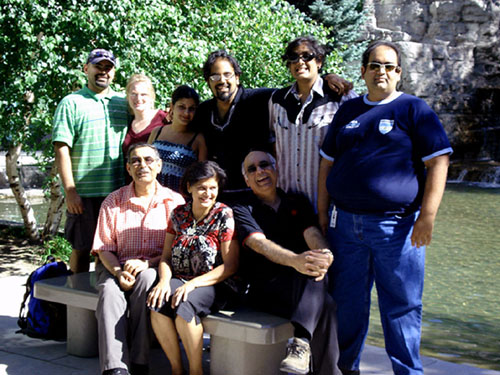
The following is an address delivered by prominent Trinidad and Tobago attorney Anand Ramlogan at the 2009 Pravasi Bharatiya Divas Conference at the Chenai Convention Center, India on Jan 8, 2009. You can email Anand at anand@tstt.net.tt
The Diaspora has made powerful strides in the countries they made home. 150 years and three generations later however, the Indian youth faces an identity crisis that will shake the very foundation of values that were so entrenched in our forefathers.
Modern technological developments such as the internet, multi-media cell phones, and iPods have changed the way we live. Much of it facilitates teenage independence in a way that loosens the grip and influence of parents.
The penetrating pressure of the need to conform and the process of artificial social engineering designed to dilute, assimilate and absorb means that a lost generation is now in the making. Parenting and peer pressure are different concepts today from what they were in your generation.
Technological developments allow the tentacles of these influences to take root and grow inside your child's bedroom and your own living room as they are glued to headphones, cable TV, computers, cell phones, televisions and Ipods.
It would be foolish to think we can win this battle by traditional means. You do not have access to your child's password to access her email on facebook or see what his/her profile says.
The evolution of the Indian identity is at a critical juncture. It is being re-shaped and influenced by new role models from the American and European music industry, the sporting arena and top actors and actresses from mainstream box office hits at the cinema.
For the children of the Diaspora, sexuality and masculinity is defined by reference to a non-Indian identity. The role models that emerge from movies and sports are either white or black, but never brown.
It as if the Indian is not white enough or black enough. Indian youths are on the periphery of this mainstream. Unable to withstand the peer pressure, our sons and daughters are slowly but surely jumping into this river of western influence where the strong currents take them far away from Indian values and culture.
Will they, in time be washed up on the shore like the growing band of teenagers who were reduced to shipwrecked non-entities without cultural roots and identities?
A major contributor to this undermining of Indian identity is the absence of young Indian role models with whom our children can identify. Posters adorn their walls in their bedroom and on facebook of white and black NBA basketball stars, rap singers, footballers and cinema gods. They grow up idolizing and wanting to be something and someone they're not.
Ask your child to name her stars and role models and see how many Indian names he/she will call. They do not idolize scientists and astronauts; they idolize popular sportsmen and artistes from the West.
In the quest to fit in, they gradually compromise until they eventually reject their heritage and identity.
The problem is compounded by the fact that our traditional culture does and has not prepared the Indian man of today for the Indian girl of tomorrow. Indian girls have been liberated by education. They are sexy, confident, outgoing and adventurous. They have expectations of a life partner based on a different, westernized concept of equality that rejects subservience.
The Indian boy is stuck in a time warp in the past while his sisters have moved ahead. Girls generally have the emotional support and confidence of the mother but Indian fathers have not traditionally developed close relationships with their sons.
The traditional role of the Indian father must be expanded and re-defined. It must now include teaching sons' social skills, how to interact with girls and yes, sensitive topics such as sex education.
As arranged marriages become less common in the Diaspora, how to woo a young lady is actually as important as how to make a million.
Whilst girls have their mothers to confide in and be a friend, Indian boys are left to fend for themselves because the father has not adjusted his role in light of modern influences and realities.
The girl is prepared and moulded in the westernized concept of equality of the sexes while the boy is still hoping for a girl like his mother without realizing that she is probably the last of the Mohicans.
The phenomenon of the single Indian female professional bears testimony to the inability of the Indian man to move beyond traditional boundaries. More and more, your educated, independent Indian daughters are forced to seek boyfriends and husbands from outside the Diaspora.
The beauty of Indian women means that they are in demand as girlfriends and life-partners. The Indian man of today is therefore totally unprepared for the Indian girl of tomorrow. Where does this leave the Indian boy of yesterday?
I am the youngest presenter at this conference and make no apologies for raising this issue despite the focus on international economics and politics. The average age of our presenters is around 60. In the future, it is my hope that more youths will be included and given the opportunity to contribute.
We must groom the next generation of future Indian leaders. Unless the Indian community identifies and acknowledges this identity crisis as an urgent social problem, a crisis is in the making: failure to evolve and adapt could lead to extinction.




No comments:
Post a Comment